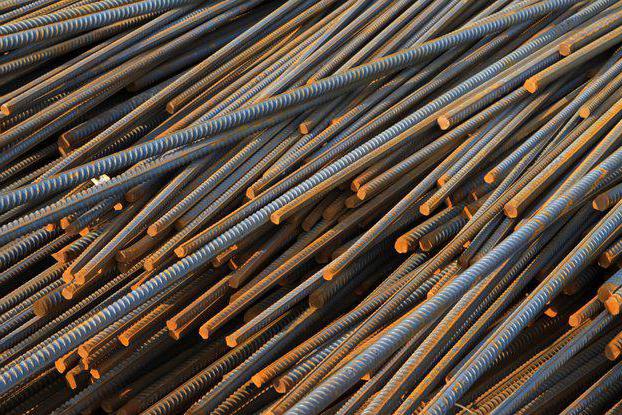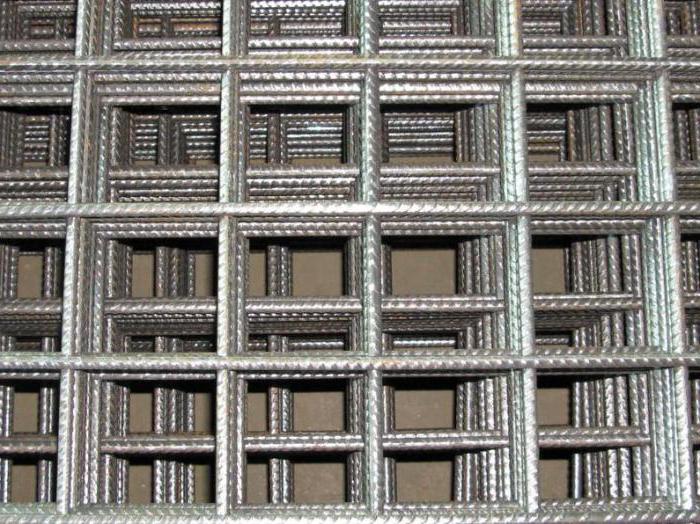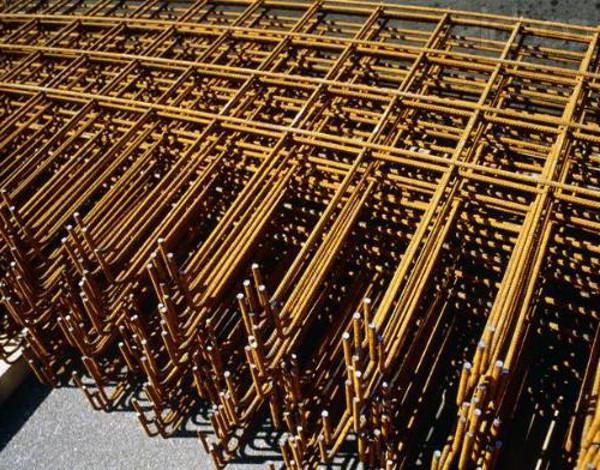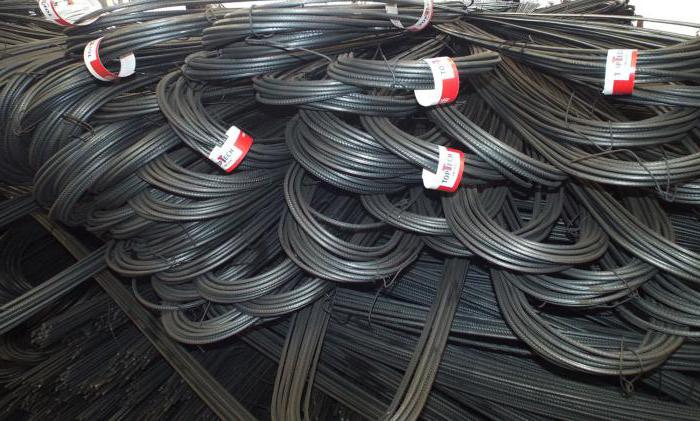In the manufacture of various kinds of reinforced concrete structures, metal reinforcement is mandatory. GOST 5781-82 regulates the technical characteristics of this material quite definitely. The fittings must be, firstly, strong, and secondly, corrosion-resistant and durable.
This element allows you to build much more reliable foundations, floors and other similar structures. The fact is that concrete has a very high compressive strength, but not tensile strength. The main task of the reinforcement is to prevent the destruction of structures with various kinds of movements.
Types of rods
Regulates the standards of such a common building material as fittings, GOST 5781-82. At the same time, its technical characteristics may be different. Reinforcement is classified as follows:
AI - smooth round profile;
AII, AIII, A IV, AV and AVI - periodic grooved profile.
According to the manufacturing method, fittings are:
hot rolled (rod);
cold-drawn (wire).

In addition to metal, nowadays, fiberglass rods of this type are also produced. According to the principle of operation, a distinction is also made between prestressing and conventional fittings. In addition, there are several types of such rods, classified by purpose:
distribution;
assembly.
According to the method of installation, the fittings can be welded or knitted.
Another classification
At the moment, there is a slightly different division of reinforcement into groups:
A1. Smooth fittings of this type are made of high quality low-alloy steel. Sometimes a rod of this brand is also made of cold-drawn wire. The main advantage is that it can be used absolutely in any environment.
A500S. This type of rod can have a periodic or round profile. Depending on the quality of the steel used for the manufacture, these rods are divided into different classes. The main purpose of the A500C reinforcement is to consolidate conventional concrete products.
B500S. This type of rod is mainly used in monolithic construction, for the manufacture of various kinds of strong hooks and the reinforcement of this group differs from A500C primarily in that it is not hot-rolled, but cold-deformed.
25G2S. The main advantages of this type of rods are a high degree of strength, reliability and durability. Reinforcement of this class can be used both in the manufacture of secondary reinforced concrete structures and load-bearing ones. The corrugation of rods of this brand has its own characteristics and allows for the most durable adhesion to concrete.
35GS. These specialized fittings are made from the finest quality steel and can be either round or corrugated. It is used mainly in the construction of critical structures made of reinforced concrete.

Reinforcement range
Thus, it regulates exactly the quality and range of fittings GOST 5781-82. The table below clearly demonstrates the ratio of the cross-sectional area of the rods and their mass.
Bar profile number | Bar section area | Weight |
Below you can see how it is determined in terms of the ratio between diameter and weight GOST 5781-82. The table illustrates this more than clearly.
Class | steel grade | Diameter (mm) |
St3kp, St3ps, St3sp | ||
St5sp, 18G2S, St5ps | from 10 to 40 and from 40 to 80 |
|
35GS, 32G2Rps, 25G2S | ||
Classes of specialized fittings
Bars made from special grades of steel are marked with letters so that the consumer can determine the specific scope of their application. The class of reinforcement GOST 5781-82 in this case is defined as follows:
"T"- this is how corrosion-resistant fittings are marked, which can also be used in humid climates;
"WITH"- rods that can be welded;
"IN"- Strengthened by an exhaust armature.

Color coding
Actually, you can define yourself in a slightly different way. So that no one has any questions about the type of rods, they are marked at the ends with paint. Thus, material AIV is marked in red, AIII - in yellow, AV and VI - in blue. According to the standards, it is allowed to paint the rods on the edges up to 0.5 m from their ends.
Main scope of use
Thus, the manufacture of various kinds of reinforced concrete structures is what reinforcement can be used for. GOST 5781-82 determines the technical characteristics of this material, as we found out, exactly. Depending on the specific properties, such metal rods can be used for:
pouring foundations;
production of floors:
building bridges;
road construction;
in masonry made of gas and foam concrete blocks.

Smooth reinforcement is most often used only to give a reinforced concrete product a certain shape. Ribbed is used to evenly distribute the load. Before pouring with concrete, the reinforcement is usually assembled into a strong frame. At the same time, both welding and special knitting wire can be used to connect the elements.
Profile
Smooth is a reinforcement with a flat matte surface along its entire length. Also, the profile of the bars is:
Periodic. Such material can have notches, ribs, protrusions. This allows for increased adhesion to concrete.
Sickle. Such fittings are usually produced by European manufacturers. However, there is also material of this type, manufactured at Russian factories.
Mixed. This type of profile maximizes the bond between the reinforcement and the concrete. Therefore, rods of this type are usually used in structures subject to severe stress.
Supply
Steel reinforcement (GOST 5781-82) with a diameter of up to 12 mm can be delivered to the warehouses of sales representatives in coils or rods. Thicker rods are supplied in rods only. The length of the latter is usually 12 or 6 m. Sometimes the fittings can go in unmeasured batches. In this case, the length can start from 3 m. Ideally, the rods should be absolutely even. However, this is not always the case. Slight curvature is acceptable because the rods are relatively flexible. However, within certain limits. According to the standards, the curvature should not be more than 6 mm per 1 p.m.

Reinforcement GOST 5781-82: material price
The cost of a bar depends primarily on its diameter. So, the price of 10 mm reinforcement can fluctuate between 20-25 thousand rubles per ton or 20-25 rubles. per running meter. A corrugated rod of 12 mm, most often used in the construction of residential buildings, costs about 22-29 thousand rubles.
So, we have found out what kind of building fittings can be. GOST 5781-82 determines the technical characteristics of such rods precisely. The armature must be made of the type of steel corresponding to its brand and have a weight corresponding to the diameter.
